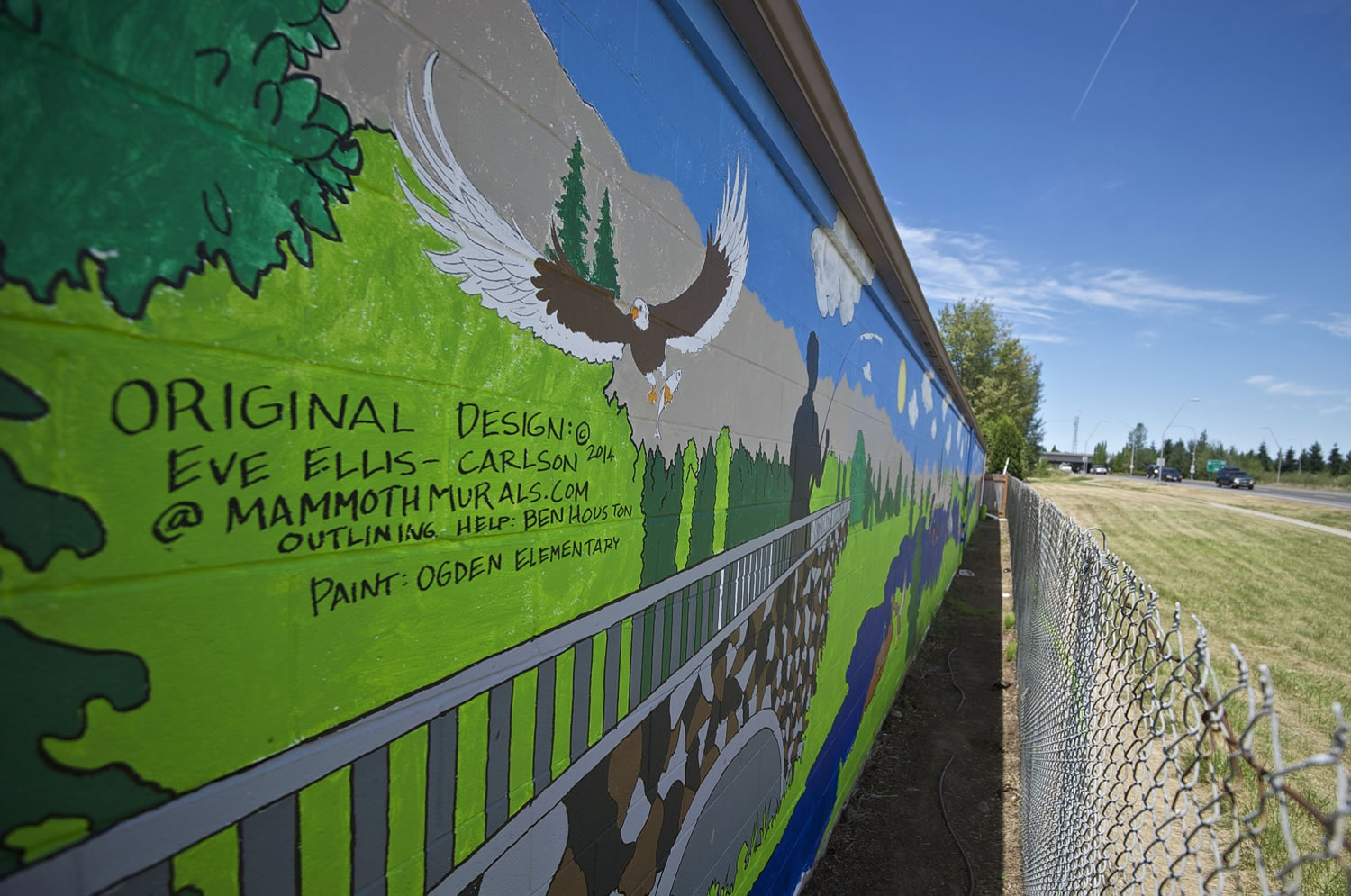The Vancouver City Council will fight a growing graffiti problem in multiple ways. Students from Peter S. Ogden Elementary School, however, took a more focused approach.
In June, fifth graders painted a mural on a building facing Andresen Road near Fourth Plain Boulevard. More than just a pretty picture along a stretch of businesses, the nature scene was made to detract vandals. The building, a former greenhouse now used for storage by Davis Landscaping, had been a frequent target of graffiti, said office manager Amy Reams.
“We get tagged all the time, and we always have,” she said, pointing to large discolored patches on surrounding buildings where graffiti has been covered by Davis employees. Security cameras haven’t helped, as the vandals strike in the dark and have their faces obscured. Reams said they must scale pipes to reach the rooftops.
But the building with the mural has so far been left alone, Reams said earlier this month.



